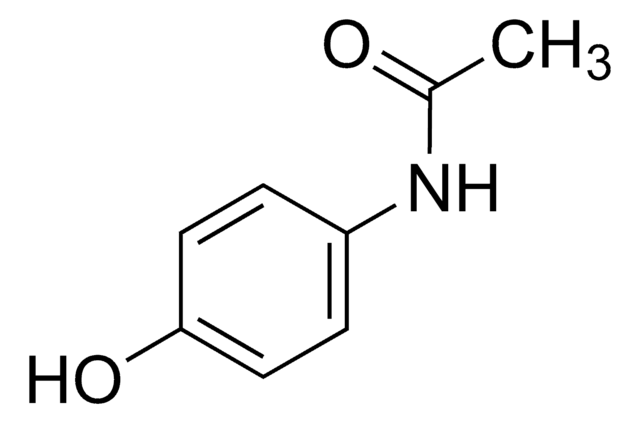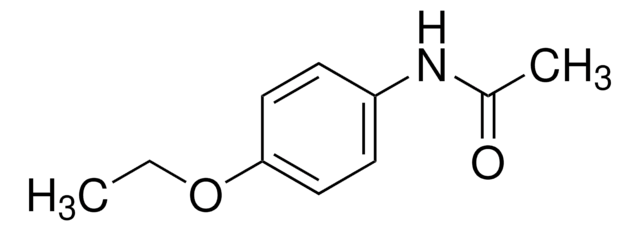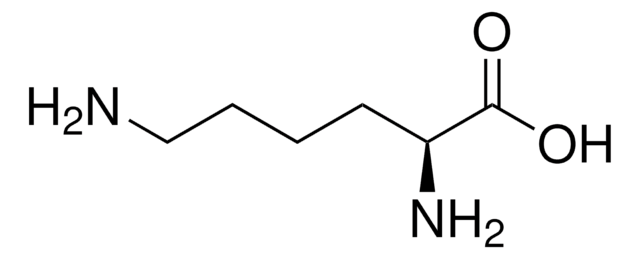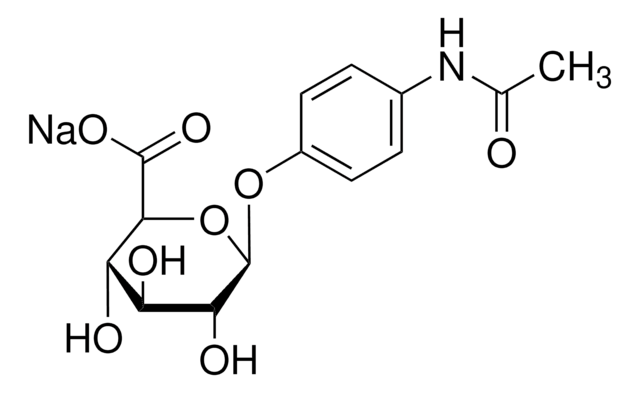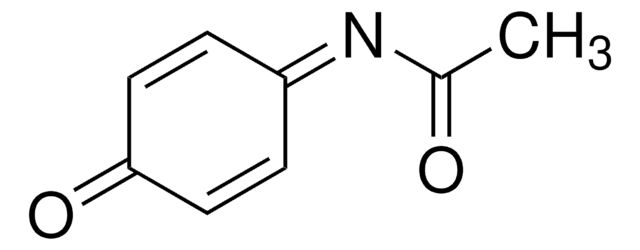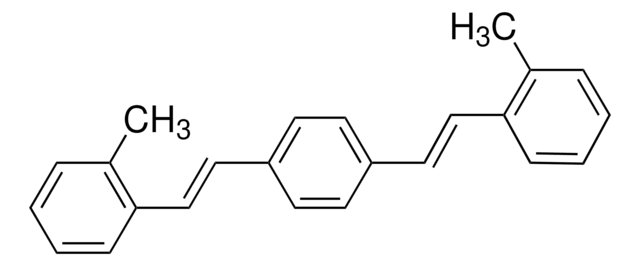A5000
Acétaminophène
meets USP testing specifications, 98.0-102.0%, powder
Synonyme(s) :
4′-Hydroxyacétanilide, 4-Acétaminophène, N-(4-Hydroxyphényl)acétamide, N-Acétyl-4-aminophénol, APAP, Paracétamol
About This Item
Produits recommandés
Agence
USP/NF
meets USP testing specifications
Niveau de qualité
Essai
98.0-102.0%
Forme
powder
Pf
168-172 °C (lit.)
Solubilité
DMSO: 5 M
ethanol: 50 mg/mL
H2O: very slightly soluble
Application(s)
pharmaceutical (small molecule)
Chaîne SMILES
CC(=O)Nc1ccc(O)cc1
InChI
1S/C8H9NO2/c1-6(10)9-7-2-4-8(11)5-3-7/h2-5,11H,1H3,(H,9,10)
Clé InChI
RZVAJINKPMORJF-UHFFFAOYSA-N
Informations sur le gène
human ... FAAH(2166) , PTGS1(5742) , PTGS2(5743) , TRPV1(7442)
Vous recherchez des produits similaires ? Visite Guide de comparaison des produits
Application
Mention d'avertissement
Warning
Mentions de danger
Conseils de prudence
Classification des risques
Acute Tox. 4 Oral
Code de la classe de stockage
11 - Combustible Solids
Classe de danger pour l'eau (WGK)
WGK 1
Point d'éclair (°F)
364.3 °F - Pensky-Martens closed cup
Point d'éclair (°C)
184.6 °C - Pensky-Martens closed cup
Équipement de protection individuelle
dust mask type N95 (US), Eyeshields, Gloves
Faites votre choix parmi les versions les plus récentes :
Déjà en possession de ce produit ?
Retrouvez la documentation relative aux produits que vous avez récemment achetés dans la Bibliothèque de documents.
Les clients ont également consulté
Notre équipe de scientifiques dispose d'une expérience dans tous les secteurs de la recherche, notamment en sciences de la vie, science des matériaux, synthèse chimique, chromatographie, analyse et dans de nombreux autres domaines..
Contacter notre Service technique


